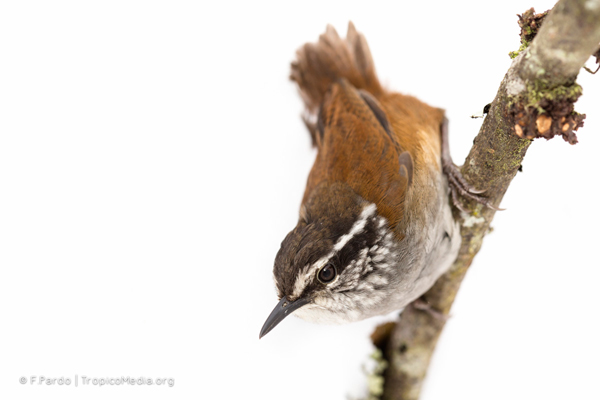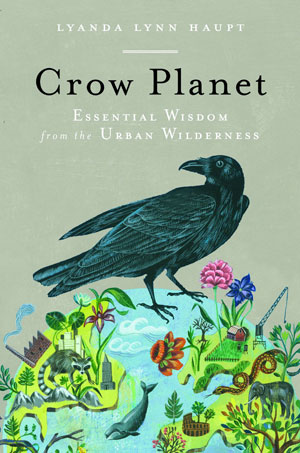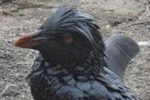A bright orange bird (photos)
The Andean Cock-of-the-rock (Rupicola peruvianus) is known for its elaborate courtship behavior. These male cock-of-the-rocks were photographed at a communal lek, where males gather to challenge each other and attract females, in Peru. More pictures of cock-of-the-rocks.
Mongabay’s mascot (photo)
Mongabay’s mascot is the scale-crested pygmy-tyrant (Lophotriccus pileatus), a type of flycatcher that lives in the lowland rainforests of Central America and northern South America.
Birds of New Guinea: Second Edition – Book Review
By Gabriel Thoumi Birds of New Guinea: Second Edition is a wonderful updated and expanded second edition to the original Birds of New Guinea published 28 years ago. New Guinea is the world’s largest and possibly most diverse tropical island. Ranging from glaciers to steep volcanic valleys to scrubland to remote islands, New Guinea also has some of the most diverse avifauna on Earth, including the bulk of the world’s rightly...
Birds of Western Africa – book review
By Gabriel Thoumi The Birds of Western Africa: Second Edition is a fully updated and comprehensive expansion of the first edition, which was the winner of the 2004 Best Bird Book – Africa, Worldtwitch. This revised second edition, which is both compact and lightweight, is a must for any naturalist or scientist working in the region. The Birds of Western Africa: Second Edition is authoritative and easy to use. It is the most...
The Passenger Pigeon – book review
By Gabriel Thoumi In 1800, passenger pigeons may have counted for 2 out of every 5 living birds in North America. Their flocks were in the billions. By 1914, they became extinct when Martha – the last passenger pigeon – died in a cage in the Cincinnati Zoo. On the 100th year anniversary of her death, a new book, simply called The Passenger Pigeon, is a stunningly illustrated and rich cultural memorial to Martha – the last passenger...
A Sparrowhawk’s Lament: How British Breeding Birds of Prey Are Faring– book review
By Gabriel Thoumi Great Britain is known as a nation of birdwatchers – or twitchers – who will travel to great lengths to conserve bird habitat and to observe birds in the wild. Yet in certain circumstances, Great Britain’s birds of prey are persecuted. This cultural dichotomy is explored in wonderful detail in A Sparrowhawk’s Lament: How British Breeding Birds of Prey Are Faring. Great Britain has 15 species of birds of prey,...
Birds of Kenya’s Rift Valley – book review
By Gabriel Thoumi Birds of Kenya’s Rift Valley is another Adam Scott Kennedy tour de force! Following up on the Kennedys’ series of bird and mammal books for Kenyan and Tanzanian travelers, previously described here on Mongabay.com. The Birds of Kenya’s Rift Valley is ideal for the traveler on safari visiting the Rift Valley’s national parks, such as Lake Nakuru, Lake Bogoria, Mount Longonot, and Hell’s Gate. The...
Sparing a thought for maleo birds on World Egg Day
By Simon Bradley / Save Our Species IUCN Friday, October 11th is World Egg Day, when agribusiness promotes the consumption of eggs as a healthy source of protein. When it comes to one of Indonesia’s national icons however, the Endangered maleo bird (Macrocephalon maleo), conservationists such as the Alliance for Tompotika Conservation (AlTo) an SOS – Save Our Species grantee, are trying to discourage the practice of eating its...
The cloud forests and hummingbirds of Ecuador
By Claire Salisbury The bus journey to Mindo winds up and out of the high, dry valley in which Quito sits between volcanic peaks, and then down into the wet, lush cloud forest on the western slopes of the Andes. This is one of the most biodiverse places on earth, within the Tumbes-Chocó-Magdalena hotspot, and recognized as an Important Bird Area by BirdLife International. Mindo is a quiet little place, surrounded by forested hills...
Capturing Wildlife
By Erika Skogg “You conserve what you know, you don’t conserve what you don’t know.” I thought of this biology quote as I photographed along side Fernando, one of the Humboldt Society’s Ornithologist, as he pulled a shimmering green hummingbird out of the mist net. Strung between skinny silver poles around eight feet tall, the black mesh nets hung through the forest trails. They stood parallel to the forest, winding 100 feet down the...
Beautiful Birds of Panama
By Hannah Lindstrom Panama has a total of 972 bird species, of which 20 are considered to be globally threatened. Since the 1940’s, Panama’s tree cover has been reduced by over 50% which is having an effect on the avifauna of the nation. Species in Panama range from Giant Harpy Eagles, Panama’s national bird, to small species of kingfishers, with many in between....
Update: interview on toxic pesticide used to kill wildlife (and endangering people) in Kenya
An interview in four parts with Paula Kahumbu, Executive Director of WildlifeDirect, provides detail and context on the use of the neurotoxic pesticide Furadan to kill lions and birds en masse in Kenya. Lions are down to around 2,000 individuals in Kenya. Kahumbu, recently awarded an Emerging Explorer by the National Geographic, and WildlifeDirect are working to pressure the government to estimate the environmental and human cost of...
Toxic pesticide used to kill birds by the thousands (warning: video is graphic)
A new video from WildlifeDirect shows the brutal impacts of the neurotoxic pesticide Furadan being used intentionally to kill entire flocks of birds, which are later sold as meat. Ducks, pigeons, and storks are often targeted. The process is brutal. “Based on a survey I did in 2009, 6,000 birds were killed every month. Tens of thousands are killed every year. I’m very concerned and I think man is at risk too–that is...
If you love or hate crows
Guest post by the American Society of Landscape Architects Lyanda Lynn Haupt is an award-winning author, speaker, and naturalist based in Seattle. Her latest book, “Crow Planet: Essential Wisdom from the Urban Wilderness“, which David Sedaris called “completely charming and informative,” received the 2010 Sigurd F. Olson Nature Writing Award. Haupt blogs at The Tangled Nest. Your new book, “Crow Planet:...
Rising hope for Asia’s vultures?
Saving Asia’s Vultures from Extinction from The RSPB on Vimeo. Vultures may not get a lot of love, or respect for that matter, from the public, but they play a vital role in cleaning up and recycling nature’s waste, which also helps prevent diseases from spreading. Vultures were once abundant throughout Asia, but that was until veterinary drug diclofenac became common. Used on cattle and livestock, researchers discovered...
Bird-dinosaur, only recently dead, discovered in Iran (or big hoax)
An photo of the reported recently-deceased bird-dinosaur. Real or faked? Photo from the Islamic Republic News Agency. A corpse reportedly showing a bird with a skull like a canine’s has shown up in northwestern Iran, reports the Islamic Republic News Agency. The animal has two bird-like legs, but a head that looks like a mammalian or reptilian predator, giving the media the ability to dub it a dinosaur bird. A team of...
Photo: emerald toucanet
An emerald toucanet (Aulacorhynchus prasinus) in Belize. Photo by: Rhett A. Butler. Fortunately the emerald toucanet is listed as Least Concern by the IUCN Red List. It is found throughout Central America and South America down to Bolivia. To see other photos of birds in Belize: click...
Photos: birds of Botswana
Malachite kingfisher (Alcedo cristata) in Chobe National Park. Photos by Tiffany Roufs. White-faced whistling duck (Dendrocygna viduata) and black-winged stilt (Himantopus himantopus) on the Chobe River. Pied kingfisher (Ceryle rudis) in Chobe National Park. Yellow-billed stork (Mycteria ibis) foraging in Chobe National Park. Brown-headed parrot (Poicephalus cryptoxanthus)...
“I hope that I never have to see it again”: oil spill hits penguins on Nightingale Island (video)
Video documents the oil spill on Nightingale Island in the remote Southern Atlantic ocean, which has taken a particular toll on Endangered northern rockhopper penguins Over a week ago conservation workers have hundreds of oiled northern rockhopper penguins (Eudyptes moseleyi) after a cargo vessel wrecked on Nightingale Island, a part of the remote UK’s Tristan da Cunha archipelago. According to a press release by BirdLife...
Photo: oil spill hits endangered penguins
Northern rockhopper penguins covered in oil. Photo by: Tristan Conservation Team of Simon Glass, Wayne Swain and Matthew Green. Courtesy of: The Tristan da Cunha Website. Northern rockhopper penguins (Eudyptes moseleyi) hit hard by an oil spill from a wrecked cargo ship on Nightingale Island in the Southern Atlantic. Already listed as Endangered by the IUCN Red List, the oil spill threatens nearly half of the northern rockhopper...













